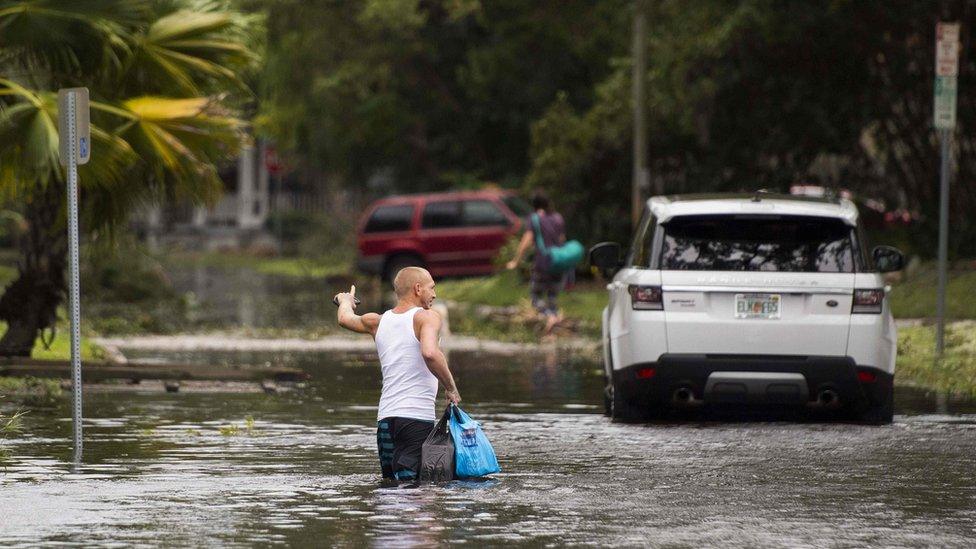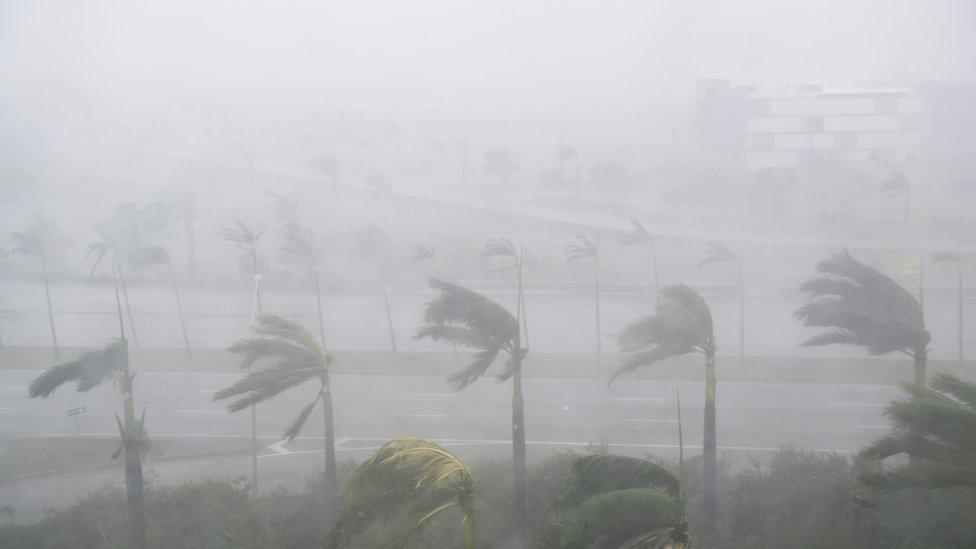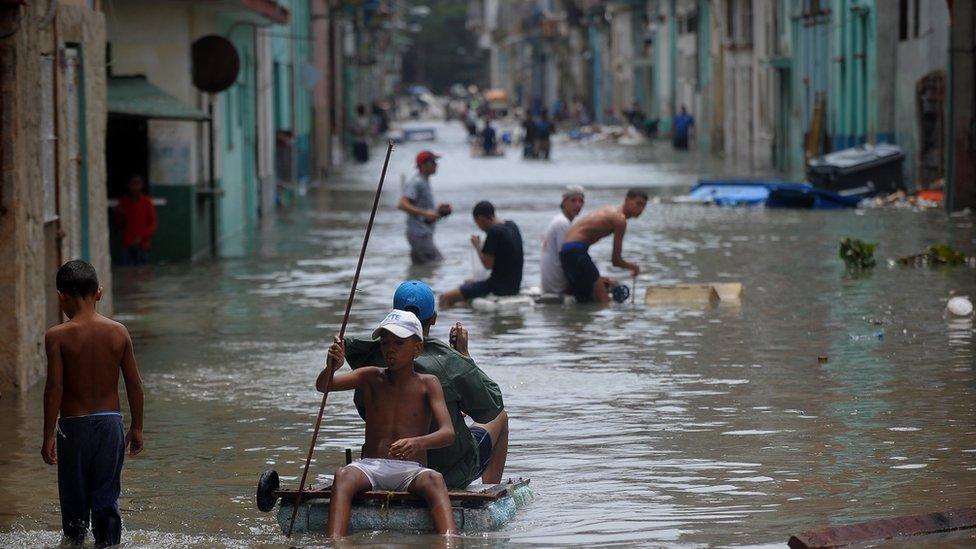Hurricane Irma: Florida assesses damage as storm weakens
- Published

Irma left parts of Florida, including this district in Jackonsville, heavily flooded
As Hurricane Irma leaves millions without power in Florida, disaster risk experts have started counting the possible cost from the deadly storm.
Irma, which hit Florida as a category four hurricane on Sunday, has since been downgraded to a tropical storm.
Analysts have cut their estimates of the total cost, but still expect it to run to tens of billions of dollars.
The storm is likely to have the biggest long-term economic impact in the Caribbean, experts said.
"In the Caribbean it's devastating because ... you're affecting the entire economy," said Chuck Watson, director of research and development for US hazard assessment firm Enki Holdings.
US damages
The combination of losses from Hurricane Irma and storm Harvey, which struck Texas and the Gulf of Mexico in August, could make 2017 "the most costly hurricane season yet," Bronek Masojada, the chief executive of the UK insurance firm Hiscox told the BBC.
Moody's Analytics expects combined damage of $150bn- $200bn from the two storms in the US, with an additional $20bn-$30bn lost in economic disruption.
Aerial footage shows the damage to homes in Orlando, Florida
Analysts had earlier warned the US faced as much as $300bn in economic impact from Irma alone, depending on the strength and path of the storm in Florida.
The storm has caused severe flooding and left more than 6 million homes without power in Florida. It has killed at least 39 people and devastated some Caribbean islands.
However, it weakened after making landfall in Florida and spared major cities along the eastern coast, such as Miami, a direct hit.
For parts of the state such as the Florida Keys, the recovery will take time, said Florida Governor Rick Scott.
But in other areas, he said: "I didn't see the damage I thought we would see."

Heavy winds and rain from Hurricane Irma are seen in Miami, Florida on Sunday
Barrie Cornes, an insurance analyst at Panmure Gordon, said the economic impact of Irma may be half the $300bn he previously gave as the uppermost cost.
Enki predicts the economic impact could be about $50bn - well below the roughly $200bn the firm predicted early in the storm.
"A wobble 20 miles to the left and it would have virtually doubled the damages," Mr Watson said.
Shares on Wall Street rose more than 1% on Monday, partly on hopes Irma would cause less damage than previously feared.
The combination of the hurricanes could shave 0.5% off GDP in the third quarter, ratings agency Moody's estimates.
But the rebuilding effort is likely to lead to higher spending, boosting GDP growth in later months, which will blunt the longer impact.
"From an economics sense, a lot of times we get a little too excited about these storms," Mr Watson said. "The human tragedy, that's a whole different picture."
Caribbean damages
Even the worst storms have historically had little major effect on economic growth in the US.
But some small Caribbean islands are looking at damage from Hurricane Irma that is many times higher than their annual GDP.
Enki forecasts that Irma's economic impact in the Caribbean could be about $30bn, with about 40% of that figure coming from lost output.
Total damage to homes, businesses and infrastructure could run to more than $12bn, with places such as Sint Maarten, the US Virgin Islands and Cuba among the hardest hit, according to the Germany-based Center for Disaster Management and Risk Reduction Technology.

Cubans wade through a flooded street in Havana
That makes Irma the costliest hurricane in history for the Caribbean, a record that reflects the storm's strength - and the increase in property and infrastructure in the region, said James Daniell, a senior disaster risk analyst for the centre.
Major hotels and resorts are more likely to have insurance, but the share of damage covered is likely to vary significantly by island, he said.
Insured losses in the Caribbean are estimated at $5bn-$15bn, according to catastrophe modelling firm AIR Worldwide.